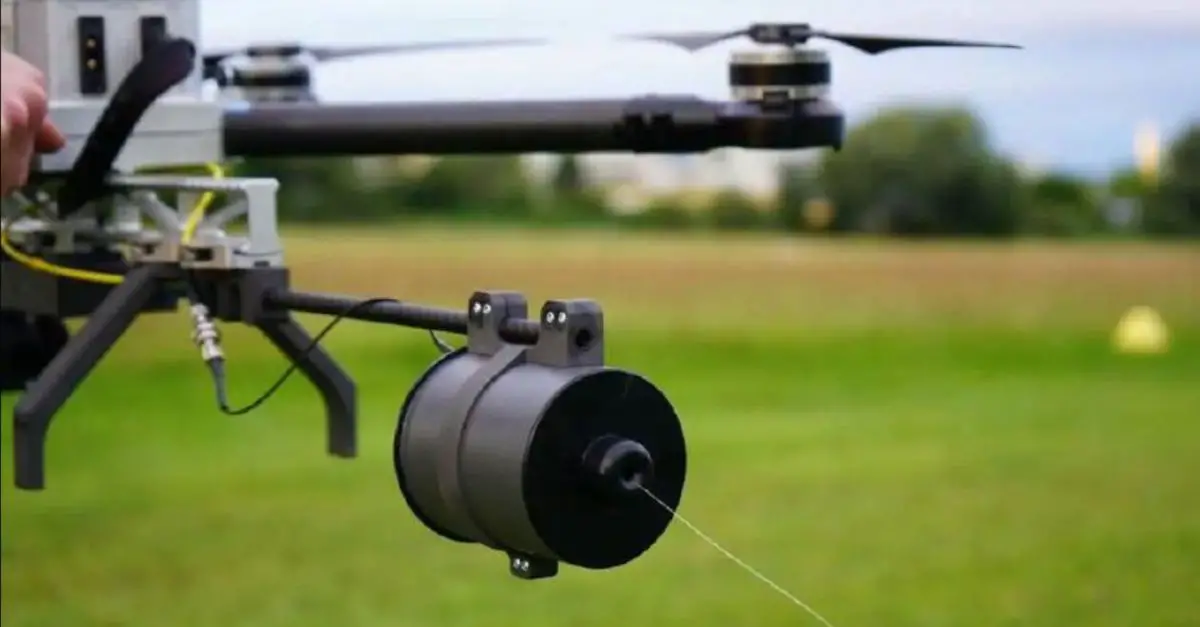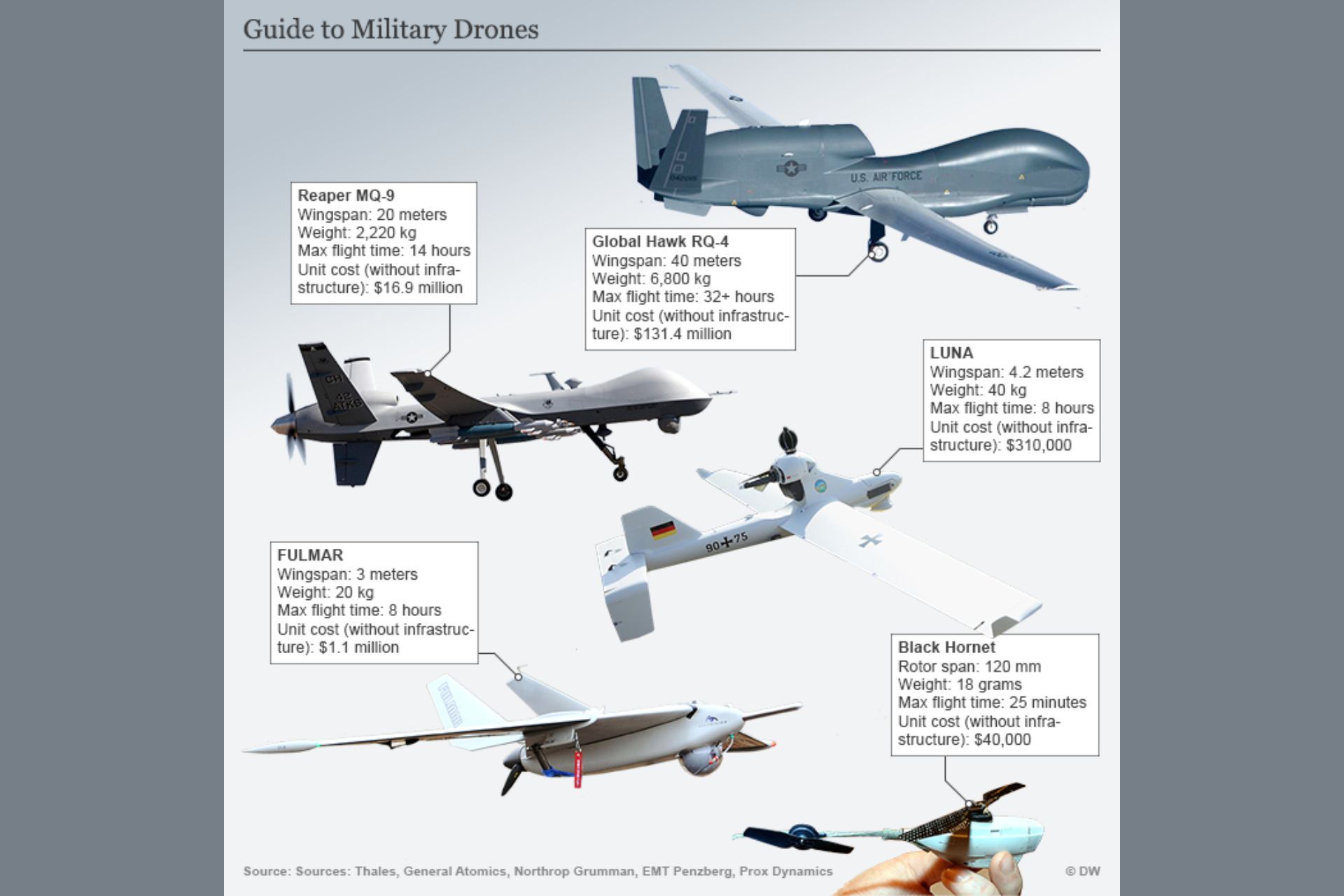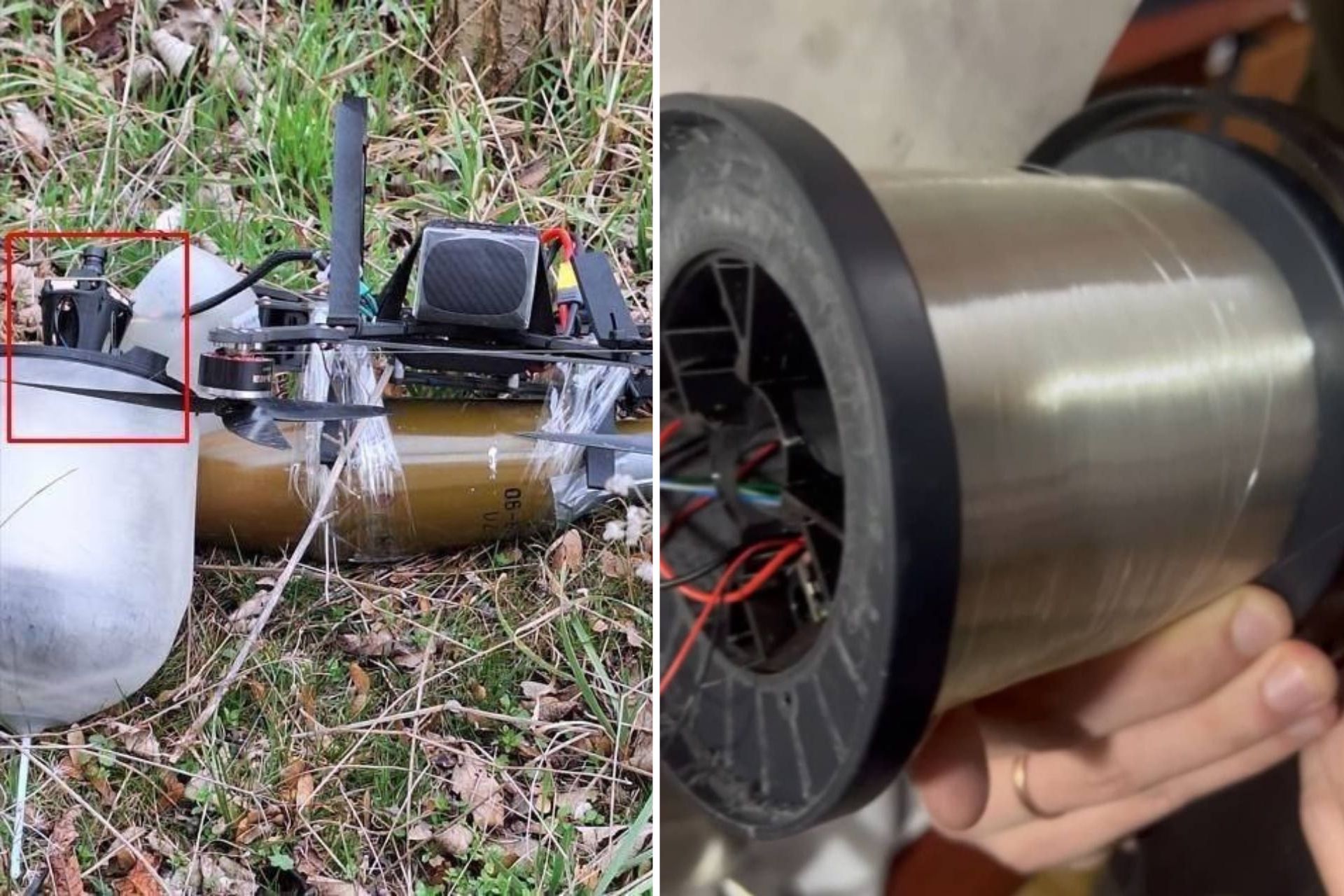Breaking News
Focus: Why jamming isn't a solution against FPV anymore in Ukraine's offensive initiative.
Today, drones are an increasingly critical element in operational conduct, benefiting from lessons learned during the conflict in Ukraine. Armies worldwide are moving toward incorporating drones into their military forces. Although drones did not originate from the conflict in Ukraine, it has facilitated technological innovation that will undoubtedly lead to a new generation of FPV drones.
Follow Army Recognition on Google News at this link

German engineers testing a new gen UAV with linked transmission (Picture source: Ukraine MoD)
Usage and Context
Despite being particularly used and publicized during the war since 2000, the military use of drones is not new. Americans have been using the MQ-9 (high altitude, long endurance) for over a decade to support ground forces as a primary actor in intelligence gathering. However, in recent years, drones have been assigned new missions, such as precision strikes. It was during the war in Iraq against Daesh that artisanal drones saw significant development, as the terrorist group utilized small, radio-controlled, and booby-trapped aircraft to target forces in the area. Then, in 2020, with the war in Nagorno-Karabakh, civilian drones militarized were widely used for the first time; today, they are called FPV drones.
More broadly, drones, whether terrestrial or aerial, are now intended for five main uses:
Intelligence, Surveillance, and Reconnaissance (ISR)
Drones are widely used to gather information on enemy movements, monitor areas of interest, and perform reconnaissance. Thanks to their advanced sensors and ability to fly at high altitudes for extended periods, they provide a real-time overview of the battlefield, enabling quick and informed decision-making.
Precision Strike
Armed drones, such as the MQ-9 Reaper or the Bayraktar TB2, can carry out precise strikes against strategic targets, thus minimizing risks to soldiers and reducing collateral damage. Their ability to remain in flight for hours allows them to strike at the right moment, often in coordination with ground forces.
Asymmetric Warfare and Terrorism
Drones are also used by non-state groups and terrorist organizations to conduct asymmetric attacks. These devices, often small and easily accessible, can be modified to carry explosives or perform reconnaissance missions, posing significant challenges to conventional military forces. Harassment and low-impact strikes are included in this mission category (e.g., dropping a grenade on a position).
Electronic Warfare
Drones can be used to conduct electronic warfare operations, jamming enemy communications or interfering with their navigation systems. This can disrupt opposing forces and create tactical opportunities on the battlefield.
Logistics and Supply
Some drones are used for logistic transport, delivering supplies, ammunition, or even medical equipment to hard-to-reach areas or those under enemy control. This reduces reliance on vulnerable ground convoys and speeds up support to front-line troops.

German image of Differnt UAV family for differents military use (Picture source: DW )
Advantages and Disadvantages of FPV in Modern Conflicts
First-person view drones offer significant advantages; they are mostly artisanally made from a civilian drone base, which is militarized by units. These small drones are very simple to operate and have interesting autonomy. At the beginning of the war in Ukraine, they were used for observation and locating combat troops. Quickly, artisanal systems were added to the drones to drop small grenades and sometimes rockets on vehicles or combat posts. The nature of the drone makes it extremely discreet; it can fly high, make little noise, and thus is hard to detect by ground troops, and its small size makes it very complex to detect with radar systems. However, a relatively simple countermeasure is possible to protect against FPV drones to some extent.
The main weakness of drones is the radio link between the operator and the drone, as it is easily jammed, which is why the Russians have implemented many electronic jamming systems on their armored vehicles.
Innovation as a Solution
In recent weeks, Russian FPV drones have shown a significant resurgence in activity despite the jamming measures implemented by Ukraine. Thanks to an FPV drone that crashed on the front line, the answer was provided. The Russians have developed optical fiber transmission, equipping their drones with an optical reel of about ten kilometers, guaranteeing a constant link. However, this technological innovation has some disadvantages.
The optical link is physical and thus limits the movements and amplitude of the drones, and obstacles that were previously negligible (buildings, windows, power lines, etc.) are now considerations. It is not yet known if redundancy in case of breakage is planned, or if the radio link can be a backup system in case the fiber breaks.
Despite these disadvantages, which involve a "ballistic" type flight trajectory rather than a straight line close to the ground as with traditional FPVs, optical FPVs provide particularly interesting image quality. In the video at the end of the article, it is noted that there are more than 50 constant FPS and a very clean resolution. This allows for easy identification of areas of interest and makes target designation easier.
This solution, artisanally developed by the Russians, is now announced by the Germans as the basis for the development of the next FPV drones that will be provided to Ukraine in the near future.
As we write these lines, no figures on the quantity of use of this system are available, but it is quite certain that this solution, given the advantages it represents, will be used in the upcoming evolution of UAV systems in the armies.

Russian FPV crashed near ukrainian frontline with 10km optic fiber ( Picture source : Ukrainian fighters)
Conclusion
This evolution of the FPV drone control system comes as a solution to jamming and its effectiveness, but today, whether on the Russian side or the "NATO enlarged" side, other solutions are deployed or presented to combat drones. Whether it's the Benelli M4 A.I drone guardian, Rostec's buckshot munitions, or anti-drone rifles, FPV and its evolutions represent the incubation of research in the defense field, which is based on a particularly rapid innovation-countermeasure cycle. The war in Ukraine seems to set the tone for future conflicts in the 21st century, which will be the scene of significant technological innovations.
Video
Video data of Russian fiber linked FPV with high resolution and high FPS thanks to optic fiber (Picture source: Russian Prince Vandal Novgorodsky unit )


























